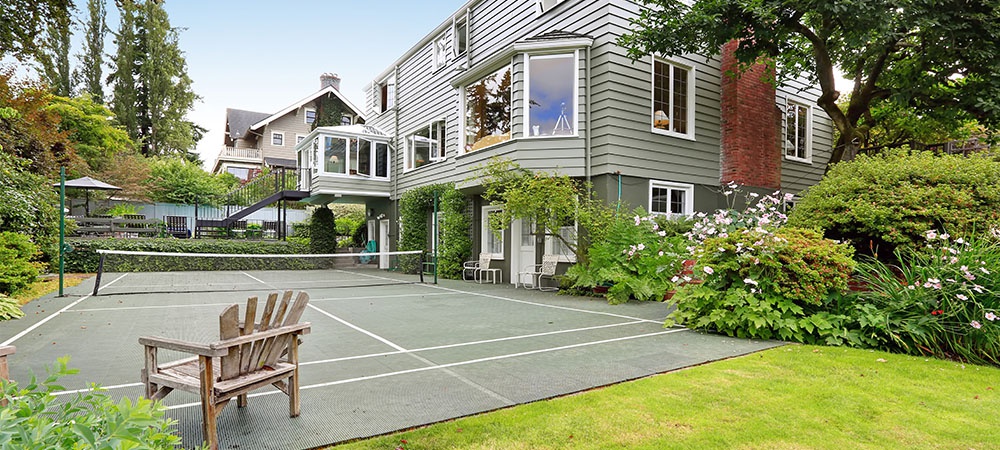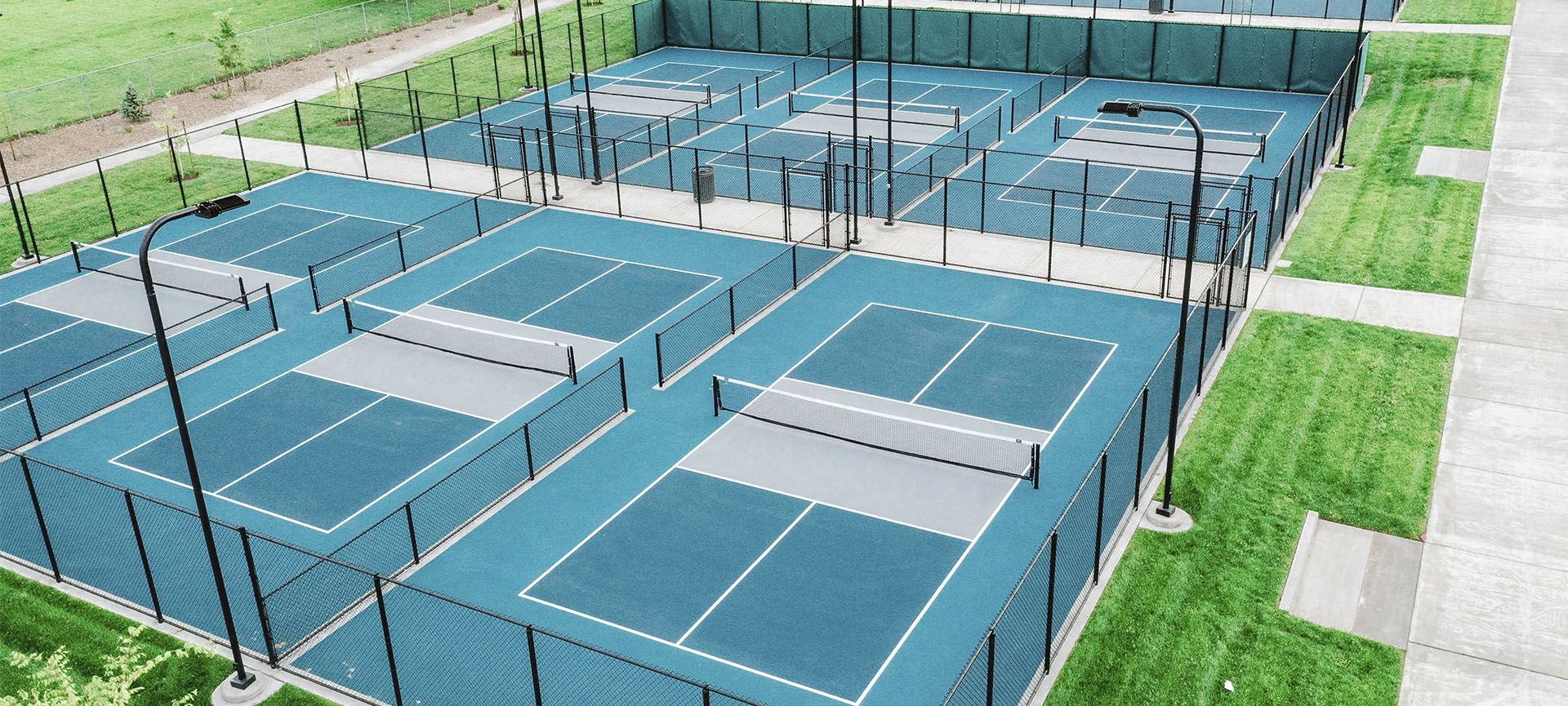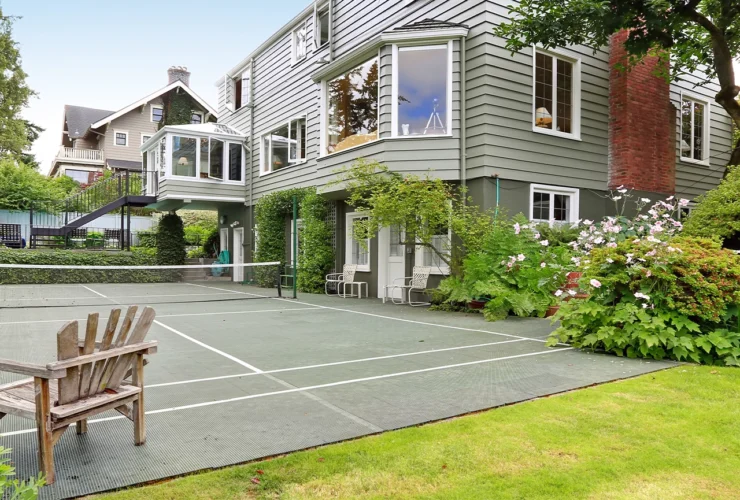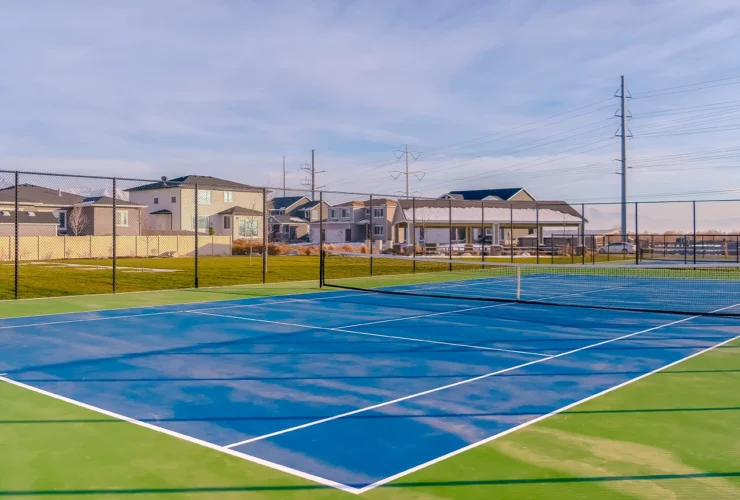Tennis Court Materials: A Comparison of Surfaces and Their Suitability for Different Climates and Uses
If you’re looking to install a new tennis court or resurface an existing one, there are a few different options to choose from. The three most common surfaces are hard courts, clay courts, and grass courts.
Each surface material has its own advantages and disadvantages. Therefore, it’s important to choose the right surface for your needs. In this blog post, we’ll compare the different types of tennis court surfaces and help you decide which is best for you.
Decide what type of tennis court surface you want – hard, clay, or grass
When deciding what type of tennis court surface is the best for you, there are a few factors to consider. The most important factor is which type of surface fits your playing style best.
- Hard courts offer consistency and speed, making them the perfect choice for players who like to hit hard, fast shots. They are usually composed of asphalt or concrete and can be covered with acrylics, rubberized paint, or other materials. Hard courts require minimal maintenance but they can also become slippery in wet conditions.
- Clay courts are a great option for tennis players looking for a slower, more tactical game. They offer excellent foot grip and allow the ball to bounce higher due to their softer surface. Clay courts are made of crushed shale, stone or brick, and can be covered in green clay material for an improved playing experience. However, these courts require more maintenance than hard courts and can become slippery when wet.
- Grass courts offer a unique playing experience as the ball can move in unexpected directions due to its uneven surface. They are best suited for experienced players who have mastered their strokes and technique. Grass courts require more maintenance than any other type and are typically only used for professional tournaments because of their delicate nature.
No matter your requirements, a tennis court surface is available to suit your needs. Each surface type has its advantages and disadvantages, so it’s important to consider all the factors before making your decision.
Consider the climate in your area
Climate considerations will determine whether you need a tennis court surface that can withstand extreme weather conditions.
Hard courts are a good option for your new tennis court construction if you live in an area with extreme weather conditions, such as heavy rain or high temperatures. The surface is highly durable and can withstand extreme conditions, making it a great choice for players who want to keep playing all year round.
Clay courts are also suitable for areas with heavy rainfall as they have excellent drainage capabilities. However, they can become slippery when wet and may need to be replaced more often due to their softer surface.
Grass courts are great for tennis courts in areas with milder climates and can provide a true playing experience. However, grass courts require daily maintenance and won’t withstand extreme temperatures or heavy rainfall as other surfaces will.
Related Article: Tennis Court Landscape Designing: Tips for Creating a Beautiful and Functional Space

Compare the costs of different types of tennis court surfaces – initial installation cost and ongoing maintenance costs
When deciding what type of court surface you want for your tennis court, it’s important to consider the different types of costs involved. The initial installation cost of a court surface varies greatly depending on what kind you choose.
Some surfaces like concrete or asphalt can be much cheaper than clay or acrylic surfaces at the start but require more frequent and pricier maintenance.
Clay courts have higher upfront costs, but may be worth it in the long run if you don’t have to replace them as often as other surfaces may require.
Additionally, any type of court surface will need regular upkeep such as weed control and debris removal, which can add up over time before you know it.
You should take into account both initial installation costs and ongoing maintenance costs to ensure the best long-term investment for your tennis court.
Think about how often you’ll be using the tennis court and whether you need a durable surface that can handle heavy usage
The frequency of use should determine the best tennis court surface for you. Hard courts are perfect for playing multiple times a week. They are durable and require minimal maintenance.
Clay courts may be better if you only play occasionally, as they can become slippery with heavy use. Grass courts are best for professional tournaments, as they have a delicate surface and require more maintenance.
No matter what your tennis court needs are, there is a surface available to suit your requirements. Consider all the factors before making your decision to ensure the best long-term investment for your tennis court.
Ask for surface recommendations from friends or family who have tennis courts at their homes
Friends or family with a tennis court in their backyard are a great resource to ask for surface recommendations.
They may have personal experience with different types of courts and can provide advice on the best one for your particular climate and usage needs.
Additionally, they may also be able to give you insight into the maintenance and upkeep of the surface they chose.
Related Article: How to Construct a Clay Tennis Court

Final Thoughts
Ultimately, selecting the right tennis court surface for you will depend on several factors including climate, usage, budget and maintenance costs. It’s also important to do your own research and compare different types of surfaces with each other before making a decision.
Or you can talk to our specialist tennis court construction team at Crowall Surface Contractors. We’ll help you decide on the best long-term investment for your tennis court.



